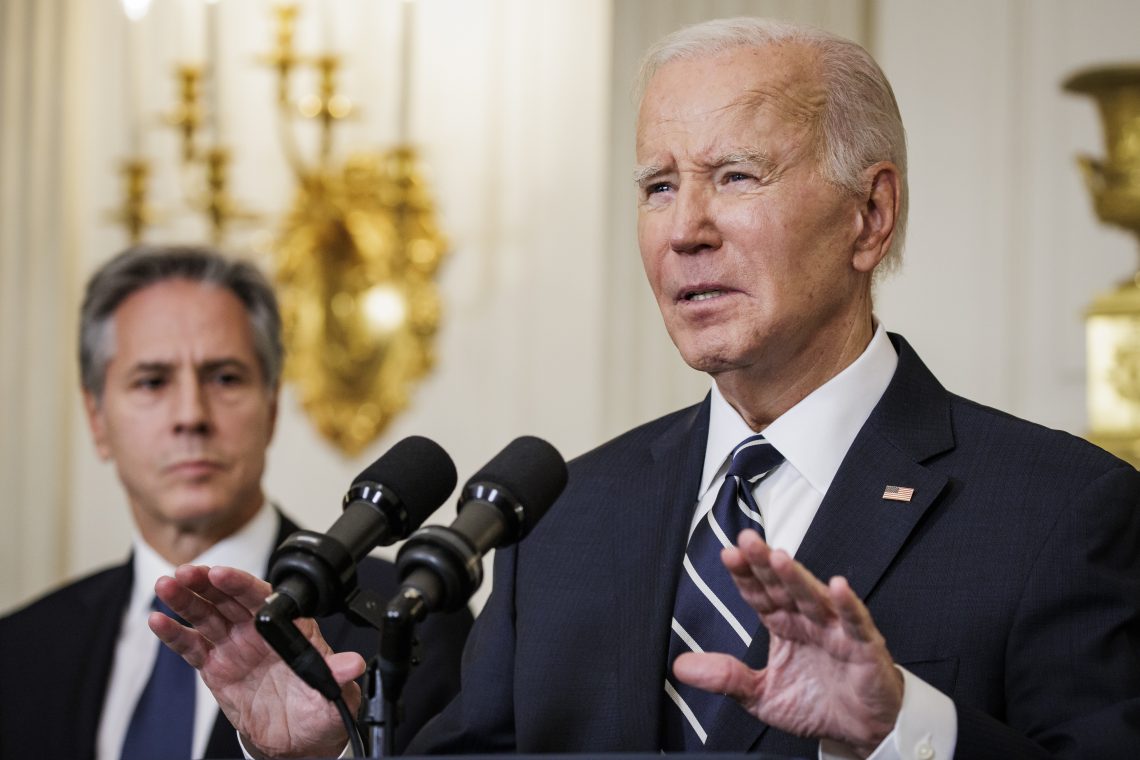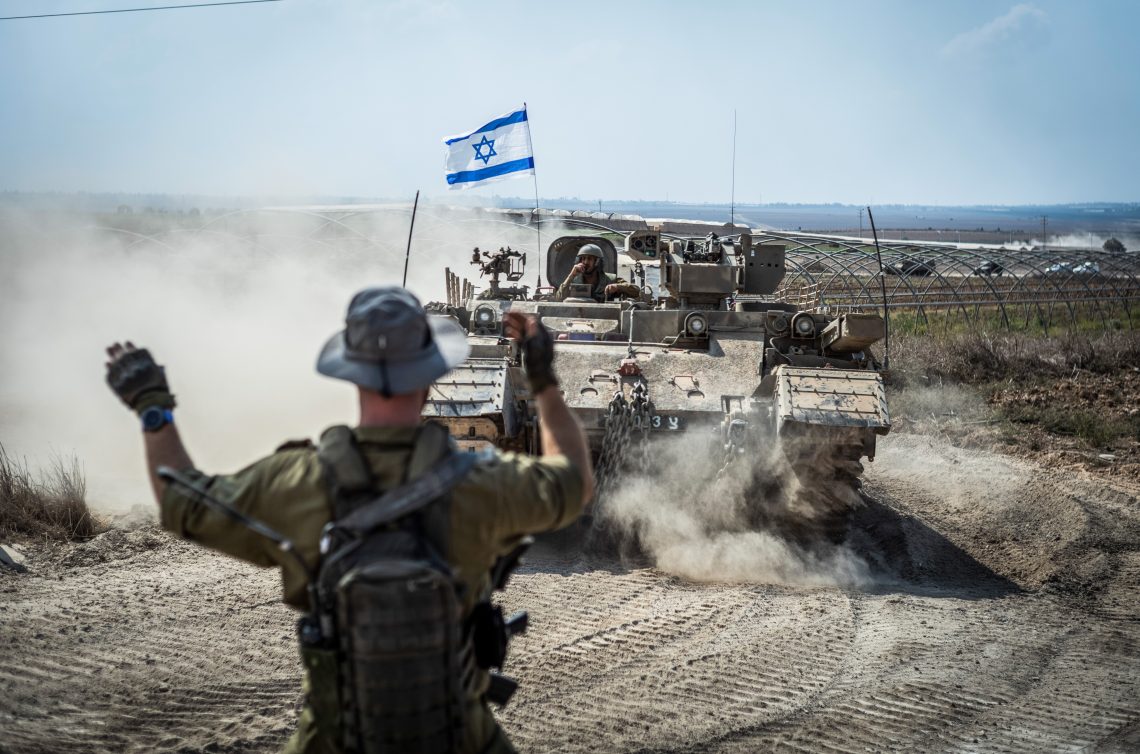War in Israel casts doubt on U.S. Middle East policy
The Biden administration’s attempts to engage Iran have encouraged Israel’s enemies and could soon force the United States to make dangerous choices.

In a nutshell
- Washington’s frequent policy shifts in the Middle East have backfired
- Iran is most likely behind Hamas’s aggression on Israel
- Tehran’s next move could include building nuclear weapons
Even before United States President Joe Biden took office in January 2021, many anticipated the Middle East could prove to be the most volatile foreign and security-policy theater for his administration.
This prediction was based on Mr. Biden choosing to implement policies virtually identical to those of former President Barack Obama (2009-2017). The Obama policies came amid growing instability in the region and tensions with critical U.S. allies, namely Israel, Saudi Arabia and Turkey. The transition of national policy stewardship from Mr. Obama to President Donald Trump (2017-2021) and, in effect, to Mr. Obama again, led to abrupt, back-and-forth shifts in the U.S. foreign policy stance, putting the Middle East’s precarious security balance at very high risk.
Hamas militants’ surprise October 7, 2023 attack on Israel, its sadistic brutality, the threat of a second front in Lebanon and Israel’s military response aiming to destroy Hamas (after years of trying to contain it) could well bring these concerns to fruition. The U.S. could face a disastrous scenario: a declared Iranian “nuclear breakout” – a decision to build atomic weapons – before the end of President Biden’s term in 2025.
Buildup to the attack
One crucial, if obvious, need for Israel is to demonstrate the capacity to protect its territory and people. Hamas, which has significant control and influence in Gaza, has long been recognized as a persistent threat. The Hamas charter calls for the eventual creation of an Islamic state in Palestine in place of Israel and the Palestinian territories and the obliteration of Israel.
The Israel Defense Forces prepared a significant response to demonstrate its capacity to defend the population and mitigate against future Hamas attacks.
The last major Israeli ground incursion into Gaza was the 22 day-long Operation Cast Lead (from late December 2008 until January 2009). Such engagements tended to be protracted and bloody, so Israel switched strategies. Instead of debilitating ground attacks, it emphasized standoff security operations (attacking targets from a distance using projectiles). In 2014, Israel conducted limited ground operations in response to the kidnapping of an Israeli soldier, relying primarily on airstrikes.
Hamas’s response was to build up an arsenal of rockets and missiles to threaten the Israeli population. In turn, Israel deployed robust air defenses. With its civilians mostly safe, Israel could control the pace of escalation.
In the present confrontation, Hamas only began with a massive missile barrage. Attacks by groups of militants crossing Israel’s border followed, claiming the lives of more than 1,300 civilians and taking, by early counts, about 150 people as hostages. That has left Israel with little choice. The Israel Defense Forces prepared a significant response to demonstrate its capacity to defend the population and mitigate against future Hamas attacks.

Who stands behind the Hamas act of war?
The most significant risk concerns whether Hamas and possibly Hezbollah operations have been masterminded by Iran. Tehran aims to weaken Israel and humiliate the Americans, possibly setting conditions for an announced nuclear breakout timed with the U.S. elections in 2024. As a result, the next American presidential term would begin with the reality of a newly declared nuclear power in the region and the expectation of Iran adopting a policy of nuclear blackmail, perhaps threatening the strategic Strait of Hormuz.
Read more on the conflict
Palestinian leaders attempt a political comeback
The socioeconomic cost of Iran’s hegemony
Terrorism is incompatible with peaceful solutions
Assuming this assessment is correct, Tehran has sent an unambiguous rebuke of President Biden’s engagement strategy – both a humiliation and a weakening of a presidency already mired in controversy over its Iran strategy. In the U.S., there is a clear political divide among supporters who note President Biden’s swift and full-throated support for Israel, as well as his condemning Hamas, and critics who point out that the administration has been tentative, particularly with Iran. It took several days for the U.S. to acknowledge that it was denying the Iranian regime access to the $6 billion transferred as part of a September 2023 deal between Washington and Tehran that led to the release of five Americans. The administration froze the funds only after intense criticism at home.
Other unfriendly interests
Complicating the U.S. response is Russia likely supporting the Hamas operation as it foments instability throughout Africa to distract international attention and diminish support for Ukraine. The Biden team will probably seek tying assistance to Israel and Ukraine together to shore up domestic support for military aid to both.
It is not clear what the response to Hamas’s call for a ‘global jihad’ will be, whether spontaneous acts of violence will erupt in the region or elsewhere.
Beijing, while not overtly active, may hope to benefit from weakening U.S. influence and deepening divisions in the Middle East. China, for instance, could seek to derail the India-Middle East-Europe Economic Corridor project (a 1,200-kilometer highway and a high-speed railway line), which Beijing sees as competition to its Belt and Road Initiative. It would also like to see the Abraham Accords (Arab-Israeli normalization agreements signed by Israel, the United Arab Emirates and Bahrain in 2020) unravel and states increasingly turning to China to hedge against other influences in the region.
Some argue that the war does not benefit China, as Beijing has been trying to court Israel. In addition, Hamas supports the Muslim Uighurs in China, annoying Beijing. That said, China’s most likely response is seeking to leverage the war’s fallout to strengthen its presence in the region.
As of this writing, it is not clear what the response to Hamas’s call for a “global jihad” will be, whether there are preplanned operations in place or spontaneous acts of violence will erupt in the region or elsewhere.
Washington’s uncertain reaction
Beyond immediate support for Israel and cooperation on hostage rescue, Washington’s short-term response remains unclear as the administration has been ambivalent over the future of its strategy to engage Iran. Nevertheless, the deployment of U.S. aircraft carrier strike groups to the Eastern Mediterranean seems aimed at deterring a second front while demonstrating U.S. intent and capability to conduct sustained air operations.
Further complicating the White House response is controversy boiling in the U.S. over support for Hamas in some quarters, which reflects rising anti-Semitism, particularly among the radical political Left. It is too soon to predict if violence in the region could become a wild card in U.S. national elections in 2024.
Scenarios
Most likely: U.S. continues to support Israel
The most likely scenario is continued U.S. support for Israel in the near-term while not pressing for an immediate cease-fire. What remains unknown is what, if any, modifications the administration will make to regional policies. Being early in the conflict, it is difficult to gauge what impact, if any, policy shifts may have on the U.S. election campaign and on the actions of Iran, Russia, China and the regional actors.
There is little likelihood of a cease-fire or cessation of hostilities soon. Iran, Russia and China all stand to benefit from protracted violence. While the survival of Israel does not seem imminently at risk, there is a clear long-term challenge to Israel’s security, regional stability and U.S. interests and influence in the region.
Less likely: Iran challenges the U.S.
The most destabilizing scenario, in which Tehran is behind this outburst of violence, has the U.S. distracted and diminishes Israel. That creates “perfect-storm” conditions to announce an Iran “nuclear breakout” before 2025, an immense challenge for any U.S. administration. The nightmare alternative before Washington would be either a greatly tempered role for the U.S. in the Middle East, and instability likely to spin out of that – or a war between Iran and one or more adversaries, with the backing and support from Russia and China.
For industry-specific scenarios and bespoke geopolitical intelligence, contact us and we will provide you with more information about our advisory services.










